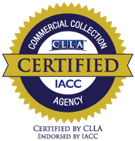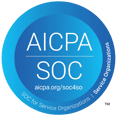
As if the month of December isn't blurry enough, your accounting department is working on year-end activities. Whether your business is a single-person shop or an enterprise corporation, the end of the year may also be the end of your fiscal year. Common activities during this time will provide insights into your business' financial situation including:
- Reconciliation of A/R
- Closing entries and journal adjustments
- Bad debt write-offs
It's time to take a closer look at some of these numbers to figure out exactly how well you're following up on those accounts receivable invoices.
Here are 5 end-of-year activities for your accounts receivable department.
Year-End Accounts Receivable Best Practices
Invoice & Follow-Up
If you haven't already, it's time to get the final invoices for the year to your clients. Depending on your accounting, cash or accrual basis, and your payment terms, your invoices need to be sent immediately to receive December payments before the end of the year.
This is also a good time to follow-up on outstanding unpaid invoices from earlier in the year. Contact your clients who haven't paid and who are likely closing out their books for the year as well. (We provide a friendly collections letter sample template to help with following-up. )
Identify Aged Accounts for Write-Off
Now is also a great time to run an aging report to identify those accounts that are unable to be recovered due to lost contact with your client or their refusal to pay. The longer these accounts remain unpaid, the longer your days sales outstanding (DSO) and the less cash flow is available. DSO is a good indicator of your business' ability to collect on accounts receivable and could affect any credit or investment opportunities.
With an accrual method of accounting, the past due accounts should be cleaned from the books before year end to make taxes less complicated. One method is to settle or accept less than what is owed. The IRS will also allow you to write off the bad debt if there is proof of the client's obligation to pay, the debt is part of your gross income, and the debt is fully or partially uncollectable.\
Send Accounts to Collections
After identifying aged accounts, another option to recover unpaid balances is to send the accounts to a collections agency. A corporate collections agency, such as Enterprise Recovery, can remove the extra work of contacting those difficult-to-reach clients about their delinquent accounts. Year-end activities can be the focus of your accounting team while those problem accounts are dealt with, either through accounts receivable clean-up activities or bad debt collections (where you'd only owe a fee contingent on any successful collections.)
Calculate Accounts Receivable Turnover Ratio
The A/R turnover ratio evaluates your business' credit and collections success. To determine this number, find the net credit sales figure (this excludes cash payments) from your income statement. Next, find the accounts receivable number from your balance sheet.
Accounts Receivable Turnover Ratio = Net Credit Sales/Accounts Receivable
This number identifies how many times in that period the accounts receivable were "cleaned up". If you identify this ratio, year over year, you'll get a good idea of the quality and efficiency of your collections process and if you've been vetting your clients well before extending credit. The higher the ratio, the better your processes.
Calculate Average Collection Period
An average collection period is a good indicator of your company's ability to convert accounts receivable to cash. This number works closely with the Turnover Ratio and clarifies how many days on average it takes to collect on accounts receivable.
Average Collection Period = 365/Accounts Receivable Turnover Ratio
Again, this information is good to calculate and compare to previous years to detect any changes or to prompt stricter policies for extending credit and pursuing collections.
The end of year is a good time to review your accounts receivable practices and prepare for the new year. Enterprise Recovery can help with:
- Bad debt recovery
- Accounts receivable clean up
- Legal advice and action for pursuing non-paying accounts
Let us know how we can help relieve some end of year duties so that, by January, your business can start fresh for the new year.






